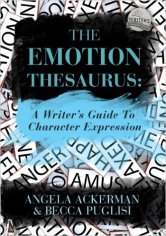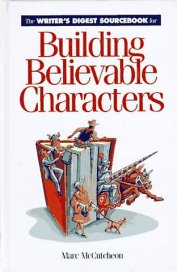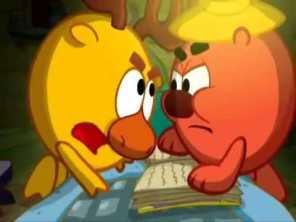Anger – a strong feeling of annoyance, displeasure, or hostility. Usually consisting of a three-part reaction: negative thoughts, frustration, and acting out (screaming, shaking fist, or violence).
Whether it’s in the form of nasty tweets or highly-charged protests, the media and social networks are rampant with demonstrations of anger. And, although most people think anger is a negative and counterproductive emotion – it does have benefits worth noting.
Benefits of Anger to Individuals
- It motivates us.
- Makes us feel more confident.
- Acknowledging anger helps lower stress and pain.
- Expressing anger rather than bottling it up, benefits interpersonal relationships.
- Provides insight if we’re open to looking inward.
- Aids negotiations.
In life, anger isn’t always a bad thing. But, how do we use it in writing? Part of making our characters well-rounded and real, is capturing their emotions – including anger. Anger equals conflict and conflicts move the plot forward.
Reasons Characters get Angry:
Just like us, our characters get angry when they feel helpless, confused, frustrated, jealous, embarrassed, or hurt, to name a few. But, how do we show anger without being melodramatic? First of all, forget the clichés and don’t rely entirely on the actions of the character (remember show don’t tell).
We show anger in the way we speak, the tone of our voice, and body language. Below is a small sample of the ways you can show anger in your characters.
Angry Speech:
- Stammer with rage
- Taunt
- Sputter
- Scream
- Speak in grudging tones
- Sarcasm
Angry Tones of Voice:
- Strained
- rising an octave
- Tinged with menace
- Dripping with Spite
- Cool, icy
- Voice shaking
Facial Expressions:
- Scorching look
- Eyes narrowing with contempt
- Withering stare
- Regard bitterly
- Warning look
- Glower
- Eyes that are cold
- Nostrils flaring
- jaw clenching
- Eyebrows drawing together
- Reddened face
Other Body Expressions:
- Clenching fists
- Stomping
- Punching, kicking, throwing
- Body tense
- Veins visibly pulsing
- Breathing deeply
- Muscles quivering
- Slamming doors, etc.
For more on how to write about anger, check out these resources:
- 37 Ways To Write About Anger by Amanda Patterson
- Creating Emotional Frustration in Your Characters

- Emotional Rollercoaster: Writing Anger by Apryl Duncan
- The Emotion Thesaurus: A Writer’s Guide to Character Expression
- The Writer’s Digest Sourcebook for Building Believable Characters 1st edition by Marc McCutcheon

Anger is one of those emotions that make us uncomfortable, but it is an essential component of who we are and thus your characters.
How do you show anger in your characters?
I’d love to hear your comments. Talk to me. Tell me your story and look for me on Facebook at SheilaMGood, Pinterest, Bloglovin, Twitter@sheilamgood, Contently, and Instagram.
 Daily Post Prompt:
Daily Post Prompt:
“How do I show anger? Well. Let me tell you. First thing I do… you know what? It doesn’t matter. All this talk off anger has gotten me… I just… seriously. You had to pick anger? I just don’t have time for this right now. So if you need me, I’ll be… somewhere else.” He said, then stormed out of the room.
As you can see, short sentences mingled with the ellipses to create tension in the speech gives the same indication without resorting to tags or blocking.
LikeLiked by 1 person
Great job! You had me going there for a minute. Thanks for the input. Have to say, you depicted it perfectly.
LikeLiked by 1 person
Thanks. I’m glad you liked it.
LikeLiked by 1 person
Pingback: Change Does Not Happen Overnight | COW PASTURE CHRONICLES
Great stuff, Sheila. Are you doing a whole series of these? I’ll have to hunt around!
LikeLiked by 1 person
I actually hadn’t thought about it. As I find writing resources or learn things that help me, I try to share them with my readers. I do a series, You Asked the Experts Answer, where I take questions, do the research and try and provide the best answers and resources. You check some of those out on the tab at the top of my blog. I’m so glad you enjoyed it and thanks for reading and commenting. It’s always a pleasure to see you in the Cow Pasture.
LikeLike
I use glower all the time and really need to vary up my anger expressions in my characters.
LikeLike
I probably use a few regular expressions, too. These resources help me a lot. Thank you for stopping by the Cow Pasture and joining the conversation. I’m glad you found it helpful.
LikeLike
The Emotion Thesaurus seems like it could be a great resource – I’ll have to check that out!
LikeLiked by 1 person
Please do. They also have a Negative Thesaurus and are coming out with a more. Check them out at Writers helping Writers. So glad to have you visit the Cow Pasture.
LikeLike
Great post, Sheila. I sometimes find it challenging to convey a character’s emotion whether it be anger, hurt feeling, or something else. This is a great list and thanks for the resources too. I’ll hang onto this.
LikeLiked by 1 person
Thanks, glad you found it helpful. Writers helping Writers (Angela & Becca) are the ones responsible for the Emotional Thesaurus and they have many others. Check them out.
LikeLiked by 1 person
Great post! Liked how the content expressed that anger is part of being human and how it is beneficial to our own personal development.
LikeLiked by 1 person
Thank you for your kind comments. I’m glad you liked it. Im so glad you stopped by the Cow Pasture and joined the conversation.
LikeLike
Great post. Thanks for sharing this.
LikeLiked by 1 person
My pleasure and glad you liked it.
LikeLiked by 1 person
Reblogged this on Don Massenzio's Blog.
LikeLiked by 1 person
Thanks Don for the reblog. So glad you liked it. And, as always glad to see you in the Cow Pasture.
LikeLiked by 1 person
You’re welcome. Great post
LikeLiked by 1 person
It is so true! Characters can’t always be happy, or there wouldn’t be much of a story. There has to be an array of emotions that each of our characters face, just like we all face in real life. Great post!
Julianne
Ink & Stitches – http://blog.jhwinter.com
LikeLiked by 1 person
Thanks Juliane, so glad you liked it and it’s always a pleasure to see you here in the Cow Pasture b
LikeLiked by 1 person
Sometimes my husband and I text just in emoticons. It can be very funny!
LikeLiked by 1 person
That’s funny! That might make a cute flash fiction piece. Glad you liked my post and glad to see you in the pasture b
LikeLike